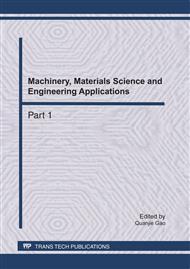p.55
p.60
p.66
p.72
p.77
p.83
p.88
p.96
p.101
Comparative Study of Structure and Pickling Characteristics of Oxide Scale Formed on Strips Produced by TSCR and Conventional Process
Abstract:
The microstructure and pickling characteristics of oxide scale formed on hot-rolled SPHC steel strip produced by different processes were investigated based on structure observation, weight loss and corrosion potential measurements. The results show that the scale formed on strip produced by TSCR consists of mainly magnetite (Fe3O4) and little wustite (FeO), hematite (Fe2O3), and that in conventional process is composed mainly wustite (FeO) and little magnetite (Fe3O4), hematite (Fe2O3). The shape of the open-circuit potential transient is determined crucially by the oxide scale structure. Time to reach a steady-state value of open-circuit potential of strip produced by TSCR is longer than that in conventional process. Both the stability of the scale in pickling solution and the effectiveness of descaling could be evaluated and predicted by measuring the change of electrochemical potential during acid pickling.
Info:
Periodical:
Pages:
77-82
Citation:
Online since:
April 2011
Authors:
Keywords:
Price:
Сopyright:
© 2011 Trans Tech Publications Ltd. All Rights Reserved
Share:
Citation:


